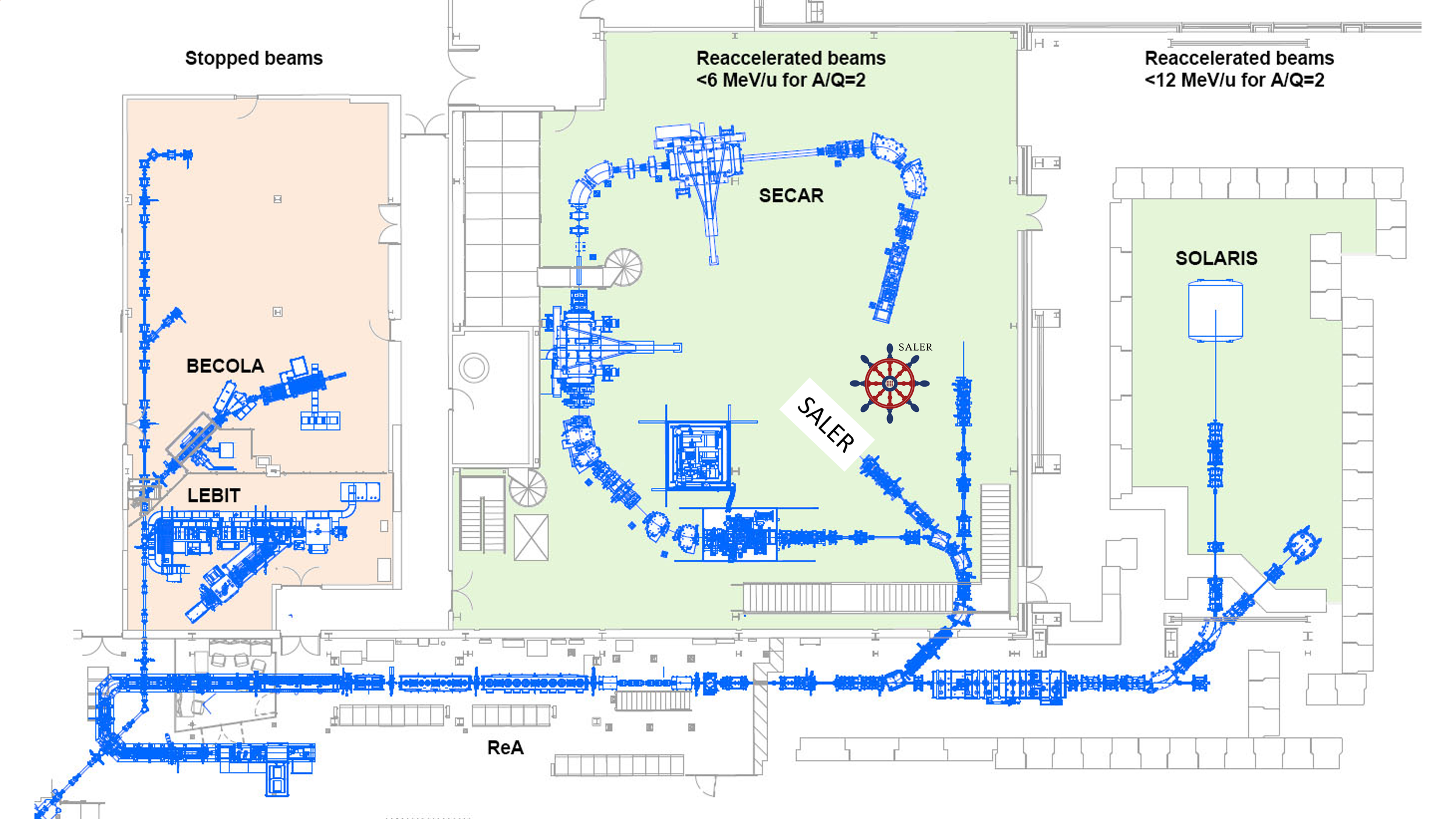Performing On-Line Measurements of sub-keV Radiation by Embedding the Most Exotic Rare Isotopes in Superconducting Quantum Sensors
SALER
Short-lived rare isotopes in superconducting sensors for the first time
The BeEST experiment has demonstrated the power of direct nuclear recoil detection with high rate down to a few eV using embedded radioisotopes in STJs. However, our technique is only possible with isotopes that have half-lives long enough to implant the radioactive atoms in one location, and cool the STJs for measurement in another. This limits us to isotopes with half-lives of days or longer. Since some of the most exotic nuclei (shortest half-lives) provide the best tests of the Standard Model, we need to extend this technique to so-called online measurements at facilities such as the Facility for Rare Isotope Beams (FRIB) at Michigan State University, TRIUMF’s Isotope Separator and Accelerator (ISAC) facility in Vancouver, Canada, and the Grand Accélérateur National d'Ions Lourds (GANIL) facility in Caen, France
SALER @ FRIB
Our first demonstration of the SALER method will be performed at FRIB in the ReA3 hall (image below). In order to implant directly into a cold (< 0.1 K), active STJ sensor array, the radioactive ions must traverse a series of thermally isolating windows in our adiabatic demagnetization refrigerator (ADR). Beams of ~1 MeV/u will be degraded in energy and carefully tuned such that the ions of interest stop in the < 200nm thick absorber layer of the sensors.










